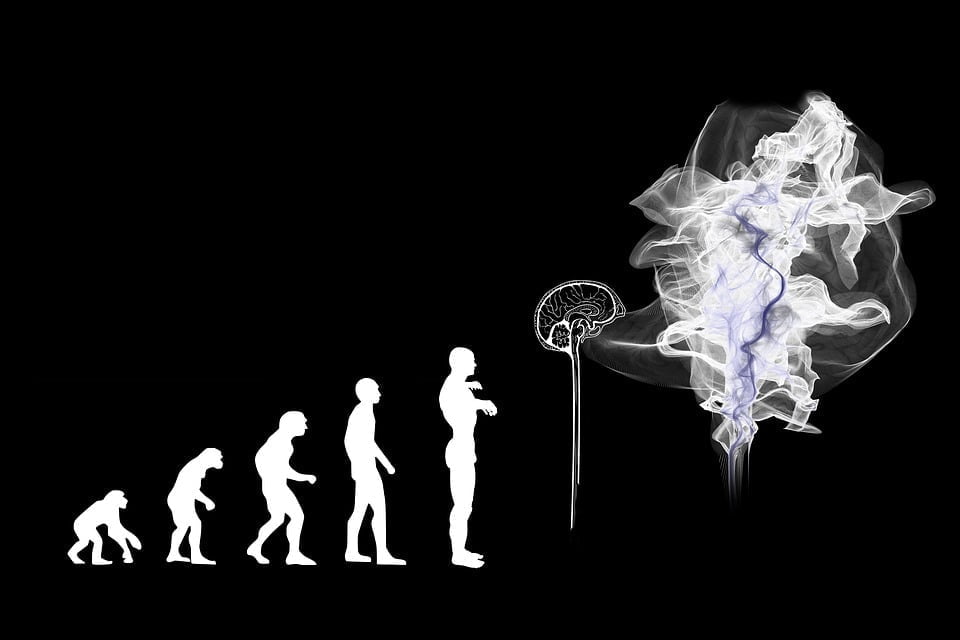The sad reality of “quality” today: How innovation and growth creates waste and inefficiencies
In the late 1970s, “quality” began to evolve from its historically “Neanderthal” passive inspection approach to its current “Cro-Magnon,” more pro-active, project-based approach “bolted-on” to the current operational status quo. Joseph Juran was a pioneer in such efforts. Various subsequent adaptations such as Six Sigma and Lean evolved it further; but, over time, it has become comfortably stuck in a misguided focus on tactical improvements at the expense of strategic improvements—doing things right as opposed to doing the right things right.
Jeff Liker, professor of industrial and operations engineering at the University of Michigan, writes (from a 2011 private correspondence with leadership expert Jim Clemmer) (my emphases):
“Originally Six Sigma was derived from [Total] Quality Management (TQM) by Motorola to achieve six sigma levels of quality, and then through Allied Signal and GE it morphed to projects by Black Belts based on statistics to become a cost-reduction program—every project needs a clear ROI. In other words, we denigrated the program from a leadership philosophy [i.e., “built-in improvement”] to a bunch of one-off projects to cut costs [i.e., “bolt-on quality”]. It was a complete bastardization of the original, and it rarely led to lasting, sustainable change because the leadership and culture were missing.
“A similar thing happened to lean when it got reduced to a toolkit (e.g., value-stream mapping, KPI boards, cells, kanban).”
Meanwhile, W. Edwards Deming was on a parallel quest
Base on his experience with the post-World War II Japanese, Dr. Deming saw that the isolated teaching of statistical methods of quality control was not enough. There were always the subsequent invisible cultural barriers of the human and management problems and resistance in the environments in which they needed to be implemented.
After 25 years of such observation, he saw the need to become a modern-day Dr. Frankenstein trying to create “new life,” i.e., a needed “mutation” that would be impossible to generate via evolution of the status quo. His 14 Points and System of Profound Knowledge remain a radically transformational vision of “built-in improvement.” It is an executive leadership philosophy designed to be woven into organizational DNA using a catalyst of deeply understanding all aspects of variation, much of which is hardly numerical. Its aim is to eradicate – rather than work around and tolerate – the everyday confusion, conflict, complexity, and chaos “perfectly designed” to be inherent in the status quo. Most importantly: it cannot be “bolted on” to the status quo!
People initially saw him as a curmudgeonly gadfly, which wasn’t helped by his infamous Frankenstein demeanor! When people would relate Six Sigma success stories to him, Deming would cryptically growl that getting things to where they should have been in the first place is not true improvement! He knew it was unrealistic to expect such a rate of improvement to be sustainable.
And there he would have remained: a beloved, amusing footnote in the history of quality. Until a 1980s perfect storm…
…the U.S. automobile crisis…a TV documentary “If Japan can, why can’t we?” putting a spotlight on this virtually unknown, neglected statistician…the rise of cheap computers, user friendly statistical packages, and the internet. Thousands upon thousands of people now packed Deming’s seminars in the naïve hope of painlessly copying his alleged “Japanese miracle.” But there was always that frustrated, nagging constant criticism that Deming neither gave “the answer” nor taught how to actually do it. Most eventually gave up and just embraced some semblance of Six Sigma and/or Lean.
Deming’s radical approach was not really grasped during his lifetime, and, quite frankly, it still continues to elude most people. This includes even his most ardent disciples, many of whom continue to hold the naïve hope that holding “Deming bible studies” while practicing the alchemy of “cherry picking” his philosophy in a shotgun approach will transform anything.
Bob Emiliani: “Dilution widens acceptance. Acceptance widens dilution.”
Using Rogers’s classic diffusion of innovation curve, the thoughtful work of improvement theory’s initial “innovators” and “early adopters” got bulldozed, consumed, and diluted by a hysteria that unleashed a Tsunami of both the “early majority” and “late majority” simultaneously. “Quality” had suddenly become a respectable and well-paying career path, especially in healthcare.
But an unchanging status quo of an arrogant, attention deficit executive culture and decreasing organizational attention spans due to the “bigger, better, faster, more, NOW!” demands of society created fertile ground for what Liker saw as four key failure factors, in order of importance:
- Leadership lacking deep understanding and commitment
- Focus on tools and techniques without understanding the underlying cultural transformation required
- A superficial program instead of deep development of processes that surface problems solved by thinking people
- Isolated process improvements instead of creating integrated systems for exceptional customer value
“Painting by the numbers” has never produced great art, so why should “quality by the numbers” – Six Sigma, Lean, etc. – produce great organizations?
The next generation of improvement “innovators” and “early adopters” continues an ongoing, exhausting struggle to keep its head above water while drowning in a sea of dilution populated by paint-by-number “qualicrats” :
“The quality movement [has given] rise to a new breed of techno-manager—the qualicrat. These support professionals see the world strictly through data and analysis, and their quality improvement tools and techniques. While they work hard to quantify the ‘voice of the customer,’ the face of current customers (and especially potential new customers) is often lost…[S]ome efforts are getting badly out of balance as customers, partners, and team members are reduced to numbers, charts, and graphs.” – Jim Clemmer
As Bob Emiliani warns:
Today, you can quickly find the information you need in a book, a video, or a blog. Then your mind plays a trick on you: It tells you that knowing about something is darn close – or even the same – as having actually done it. There is a large gap between knowing and doing, but your mind tricks you into thinking the gap is small or non-existent. This leads to overconfidence in what one knows. And then we excessively praise those who apply a few easy-to-use Lean tools they read about in a book or learned in a training course and who do little more.
“If there are twelve clowns in a ring, you can jump in the middle and start reciting Shakespeare, but to the audience, you’ll just be the thirteenth clown” – Adam Walinsky
Today, there are thousands upon thousands of clowns. How does the sorely needed next generation of improvement “innovators” and “early adopters” get taken seriously in the face of these seemingly impossible odds? Right now, the “Cro-Magnons” are easily winning the “survival of the fittest” battle because…
…to further complicate matters, Cro-Magnon “good enough mediocrity” also has significant entrenched vested interests that continue to keep it fat and happy.
A massive training industry juggernaut (especially the “belt” industry), unvetted, self-appointed experts (and their followers), and Deming “hacks” (his term) are holding “improvement” hostage. Much time is spent building formidable fortresses at the summit of Joseph Paris’s aptly named Mount Stupid protecting those heavily vested interests.
Emiliani: “Vested interests are remarkably durable because they are supported by various decision-making traps: anchoring, status quo, sunk cost, confirming evidence, framing, and estimating and forecasting. They are also buttressed by illogical thinking: avoiding the force of reason, false assumptions, red herrings, and special pleading, to name a few.”
Many influential people may indeed be skilled critical thinkers, adept at PDCA, 5 Whys, A3 thinking, etc., but their kowtowing to today’s increasing political correctness (and the too easy financial success that can result) creates an insidious form of behavioral waste that makes nothing better. Haven’t you noticed increasing levels of groupthink and satisfaction among people who promote a management practice that abhors groupthink and satisfaction?
Improvement practitioners: heal thyself…and standardize!
Good improvement education teaches how to observe processes, how to think critically, and how to reflect on what one has learned, among many other things.
Tools, advanced tools, urgent “bolt-on” projects, and obtaining certifications have evolved as serious distractions to this basic work.
The need to improve business performance and the bottom line never goes out of style, but it’s time to move the focus from “method” (TQM, CQI, Six Sigma, lean, lean Six Sigma, Toyota Production System) to a holistic system of improvement that can successfully create and sustain significant improvements of any type, in any culture, and for any business. This is what Dr. Deming grasped.
Ron Snee, a respected statistical colleague well-versed in Deming theory, painfully reminded us of lessons still not learned in his classic 2009 article…and continue not to be learned:
- Failing to design improvement approaches that require the active involvement of management
- Focusing on training rather than improvement (especially modular e-learning)
- Failing to use top talent to conduct improvement initiatives
- Failing to build the supporting infrastructure, including competent personnel skilled in improvement and management systems to guide improvement
- Failing to work on the right projects—those that deliver significant bottom-line results and move the “big dots” in the board room
- Failing to plan for sustaining the improvements at the beginning of the initiative
Déjà vu? Aren’t these issues Deming was trying to address via his robust 14 Points and subsequent (and, unfortunately, poorly named) System of Profound Knowledge?
Snee’s Seven Characteristics of Holistic Improvement
- It works in all areas of the business—all functions and all processes.
- It works in all cultures, providing a common language and tool set.
- It can address all measures of performance (quality, cost, delivery, and customer satisfaction).
- It addresses all aspects of process management (process design/redesign, improvement, and control).
- It addresses all types of improvement (streamlining, waste and cycle-time reduction, quality improvement, and process robustness).
- It includes management systems for improvement (plans, goals, budgets, and management reviews).
- It focuses on developing an improvement culture (uses improvement as a leadership development tool)
But you can’t “bolt on” Deming’s “built in” philosophy!
The obsession with Deming’s 14 Points continues, as does the tired question: “Which of Dr. Deming’s points should I start with?”
Answer: None of them…and all of them!
When you can finally understand the answer “All of them!” you’re on the right track
Liker’s observed failure of “Leadership lacking deep understanding and commitment” has become a tired platitude. Yet, in many conference presentations, people “sort of, kind of” mention it (quickly), then tiptoe around it and begin talking about the latest futile fad du jour that will allegedly empower the front line while shouting “Joy in work!” It continues to be the elephant in the living room.
This is a definite problem that Dr. Deming’s Point #2 (“Adopt the new philosophy”) and Point #7 (“Institute leadership”) of his famous 14 Points address. So, am I saying you should address those two points first? No.
But do avoid the guaranteed-to-fail shotgun, “cherry-picking” approach
30 years ago, I attended a talk where a Deming expert was asked over and over and over about the 14 points: “Which ones should you work on first?”, “In what specific order should they be implemented?” You get the idea. After every question, he would smile and gently answer “All of them.” He finally saw that the audience wasn’t getting it and, when asked yet another question about specific points, he stood up and answered:
“All of them…all of them…all of them! They are a synergistic system.”
That was a huge “Aha!” for me – I finally “got it.”
Paradoxically, by neither focusing on the points themselves nor working specifically on any of them, you can now work simultaneously on all of them. This is true fusion, in contrast with the naïve, futile “cold fusion” alchemy of cherry picking the 14 Points.
As you do this and start to “get it,” you will find less and less need to even mention them!
What to do with recalcitrant executives…and dreaded “statistics”?
The reality is that most leadership is clueless to the power of statistical thinking in everyday management, which certainly doesn’t help improvement efforts. This is also true of many practitioners. It’s neither’s fault.
Much of what is currently taught in (alleged) statistical training is legalized torture that shouldn’t be applied to daily management—or probably most anything else (except maybe manufacturing product quality). I’m an MS statistician and finally “got it” that traditional topics such as p-values, confidence intervals, normal distribution, sample size, and regression, to name a few, are virtually worthless for everyday built-in improvement – except for…
…the 1 to 2 percent of people (only) who need the advanced statistical knowledge to know when it is appropriate to use them.
Dr. Deming would roll over in his grave if he could see the statistical subculture of cookie cutter “hacks” (his term) that have been turned out in his name.
Don’t waste too much time on tools and techniques. You can learn the lot in 15 minutes. — Dr. Deming (related by David Kerridge)
The only prerequisite for the statistics needed to solve 85 to 90 percent of your problems: the ability to count to “8,” sort a list of numbers, and basic arithmetic.
It’s about a mindset, not a tool set.
“The Everyday Use of Organizational Data” Process
Why do I get blank stares when I ask whether Lean audiences are aware of “the routine organizational use of data” process? Consider (courtesy of Mark Graham Brown):
- 50 percent of time executives spend in meetings where data are involved is waste
- Middle managers each waste one hour a day poring over useless operational reports
- 60 percent of published operational reports are waste
- 80 percent of published financial data is waste
How many meetings? How many people? How many hours?
Multiply all this times salary/benefits and you get…? A HUGE number!
I dare you to find a bigger waste. I can hear many of you, “Show me some examples.” Here you go – if you don’t see at least a dozen similar opportunities in your work and, even more important, are blind to the destruction caused by these kinds of meetings, get out of improvement!
Consider: by reducing everyday data insanity chaos using routine data, wouldn’t its desirable consequence of less tampering (treating common cause as special) be a catalyst to boost the credibility of your more formal efforts — regardless of the individual improvement approach? Think of how much that liberated precious time and the reduced chaos would increase your effectiveness…and reputation.
The Need for a Common, Organization-wide Language Regardless of Improvement Approach
An initial objective of built-in improvement should be to reduce cultural human variation by creating a common improvement language for everyone — a basic understanding of process, variation, “plot the dots!” (simply plotting data over time), and common/special causes, which easily takes less than an hour.
What would it be like to have a culture that would routinely ask:
- “Are we ‘perfectly designed’ to get this result?”
- “Is this a common or special cause?”
- “This is awfully vague. How can we find and focus on the vital 20 percent?”
- “What would plotting the dots tell us?”
Regarding the last point, this will begin new, more productive conversations. Several important things happen when you plot data over time.
First, you have to ask what data to plot. In the exploration of the answer you begin to clarify aims, and also to see the system from a wider viewpoint. Where are the data? What do they mean? To whom? Who should see them? Why? These are questions that integrate and clarify aims and systems all at once.
Second, you get a leg up on improvement. When important indicators are continuously monitored, it becomes easier and easier to study the effects of innovation in real time, without deadening delays for setting up measurement systems or obsessive collections during baseline periods of inaction. Tests of change get simpler to interpret when we use time as a teacher.
Use the Pareto Principle: What are the 20 percent of the routine numbers that cause 80 percent of the organizational “perspiration”? Plot them! How do they link with current formal project work?
Most important of all: demonstrate competence
Get results first, quietly and without any fanfare, before you exhort everyone (else) to do it. Get a reputation for being a competent practitioner — and that you let your colleagues get all the credit for any results.
Given: Top and middle management will initially fight you every step of the way. Lecture, logic, and one off demonstrations (especially Deming’s Red Bead Experiment) won’t even begin to make a dent in this.
Short term strategy: create a critical mass of 25 to 30 percent of your leadership interested in and consistently practicing data sanity to help them get results that move their C-suite “big dots” — and let them have all the credit while encouraging them to educate your culture.
How many of Dr. Deming’s 14 points does this process address? (all of them). Have I formally referred to any?
“But how will we know how we’re doing?”
As I said to one particularly arrogant executive whose walk didn’t come anywhere close to matching his talk…and was being laughed at behind his back in the culture: “I’m sorry. Your behavior is speaking so loudly that I can’t hear what you’re saying.”
Executive and cultural behaviors are screaming at you to be read:
- What do schedules, budgets, meeting agendas and promotions telegraph as to values and priorities? What are you noticing versus six months ago?
- How many “silly meetings” rife with data INsanity are still being tolerated? How many have you made “data sane”?
- Have successes using Data Sanity been visibly celebrated?
- Are the words “statistical” and “quality” being used less and less as qualifiers because they are “givens?”
How many leaders are willing to own and deal with the lack of “joy in work!” caused by confusion, conflict, complexity, and chaos (and for some, their tantrums) due to lack of a basic knowledge of variation in “the everyday use of data” process? This remained the underlying source of Deming’ s unforgiving curmudgeonliness until the end of his life.
If you’d like to explore this perilous, but endlessly fascinating journey further, check out my article, “But Deming didn’t tell us how to ‘do’ Deming!” I don’t tell you either, but I supply you with a roadmap for the unique journey you will have to forge.
By Davis Balestracci

Davis Balestracci is an independent consultant in improvement uniquely synthesizing the work of W. Edwards Deming and Joseph Juran in the book “Data Sanity” (May 2015). With over 35 years of consulting experience in different industries (especially health care), including 15 years of extensive international public speaking with a reputation for being provocative, challenging, humorous, practical and down-to-earth, his strengts encompass: Teaching the broad application of simple statistics in a manner that Dr. Donald Berwick described as having an “elegant simplicity”. He has also delivered consulting / seminars in the US, Israel, Palestine, Vietnam, Norway, Denmark, New Zealand, Australia, Canada and extensively for National Health Services of England and Wales. Other highlights of his career include the development and teaching of a Leadership MBA course in “Statistical Thinking”. Connect with him on LinkedIn.








